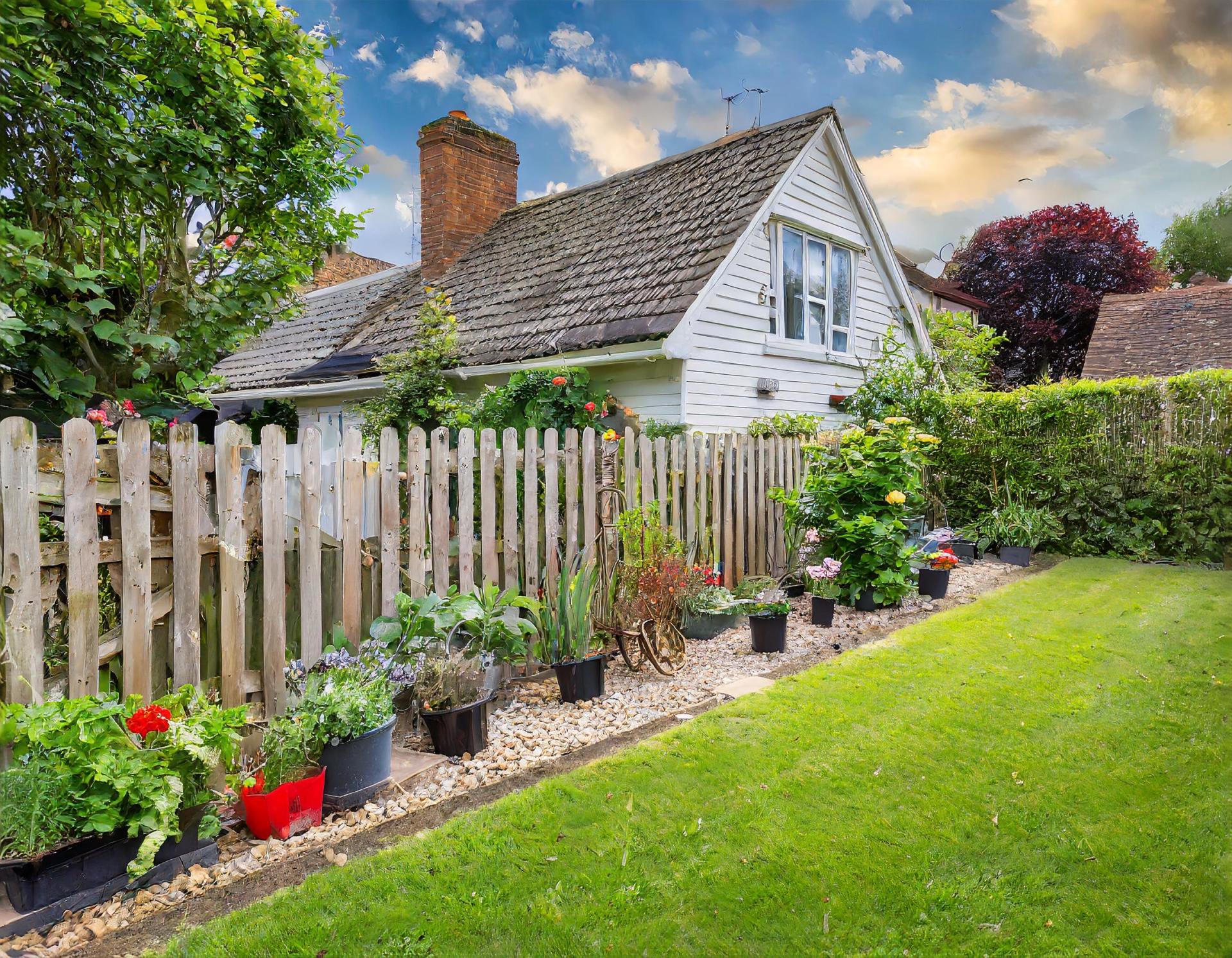
Whether you're caught up in a dispute with a neighbour about fence height or the right to light in your garden, or you you just want more privacy while you relax in your garden, knowing your rights and the rules around fence height in the UK can help you make informed choices.

This article aims to explain the maximum fence height allowed without needing planning permission. It offers guidance on height limits for fences and boundaries in different situation, helping you understand your options and stay within the law to avoid conflicts like boundary fence disputes.
Table of Contents
What are the maximum fence height regulations without planning permission?
In the UK, the general rule for back garden fences is that they shouldn't exceed 2 meters (around 6.5 feet) in height without planning permission. That's why most fence panels you see at garden centers are around that height or slightly less.
For front gardens, if your property faces a road or is open to public paths, the maximum height for a fence is typically 1 meter (around 3.3 feet). However, if your property doesn't face a road, you can usually have a fence up to 2 meters high.
If you want to put up a taller fence facing a road, you'll need to get planning permission from your local council.
Keep in mind that different councils have different rules, so it's a good idea to check with them before putting up a fence if you're unsure about whether it meets the height restrictions. You can usually find this information on your council's website.
Rules and regulations regarding maximum fence height
Before diving into plans for a new fence or giving your existing one a makeover, it's wise to figure out which fence is yours. You can typically find this information by checking the title deeds for the property.
If you own the land where an old fence, fence post, wall, or gate stands, you have the right to remove it.
The main law that dictates the height of residential fences is the Town and Country Planning Act 1990. This law considers fences, walls, and gates as 'permitted development,' meaning they don't need planning permission as long as they adhere to height restrictions and other criteria.
However, if you want to build a taller fence than what's allowed under permitted development, you'll need to get planning permission from your local council.
If you're seeking more privacy or shading than the 2-meter restriction allows, you can consider installing a trellis with climbing plants for additional shading.
It's essential to note that most councils can enforce maximum fence height regulations up to four years after they're erected. Sticking to these regulations ensures your fence stays standing, protecting your investment.
Another law to consider is the Party Wall Act 1996, especially if the fence you plan to erect or modify is on or near your property's boundary line. If your plans involve changes to an existing party wall, you'll need to notify any adjacent property owners.
Permissible heights for different types of properties
Height restrictions can vary based on the type of property you have, especially if it's within a conservation area, a listed building, or within the curtilage of a listed building.
Curtilage refers to the enclosed space of grounds and buildings surrounding a dwelling. Simply put, if your property borders a historically listed building, it falls within the curtilage.
If your property falls into any of these categories, you'll probably need to apply for planning permission from your local council before making any changes to fence height.
Restrictions and exceptions
There are some exceptions to the rules about fence height, which may depend on where your property is located and its specific circumstances. These exceptions apply if you live in a conservation area or a listed building. Additionally, local council rules and restrictions should be considered.
If you're renting a property, you typically don't have the right to change boundaries, including fences. It's the landlord's responsibility to maintain the entire property, including boundaries and fences.
However, there is an exception for hedges. While there are height limits for fencing, there are no specific limits for hedges.
The importance of checking local regulations
While the Town and Country Planning Act sets out the general requirements for fence height, you shouldn't overlook local council laws and bylaws, which can vary between councils. These local regulations might cover height restrictions, permitted materials, fence designs, and even colors.
We strongly advise reaching out to your local council before making any changes to your fence.
Also, it's important to communicate your plans with your neighbors as a matter of courtesy. Most boundary disputes can be avoided through open communication. Surprising your neighbors with changes to the fence may lead to tension and unnecessary conflict. So, a friendly chat over a cup of tea can go a long way in preventing misunderstandings.
How can Lawhive help?
If you're facing challenges like a denied planning permission or a dispute with your neighbors regarding fence height, our team of expert property solicitors is here to assist you. We'll work with you to find a solution that meets your needs.
If you're unsure about maximum fence height regulations or need personalised guidance, don't hesitate to reach out to Lawhive's property law experts.
Contact us today for a free case evaluation with our legal assessment team.